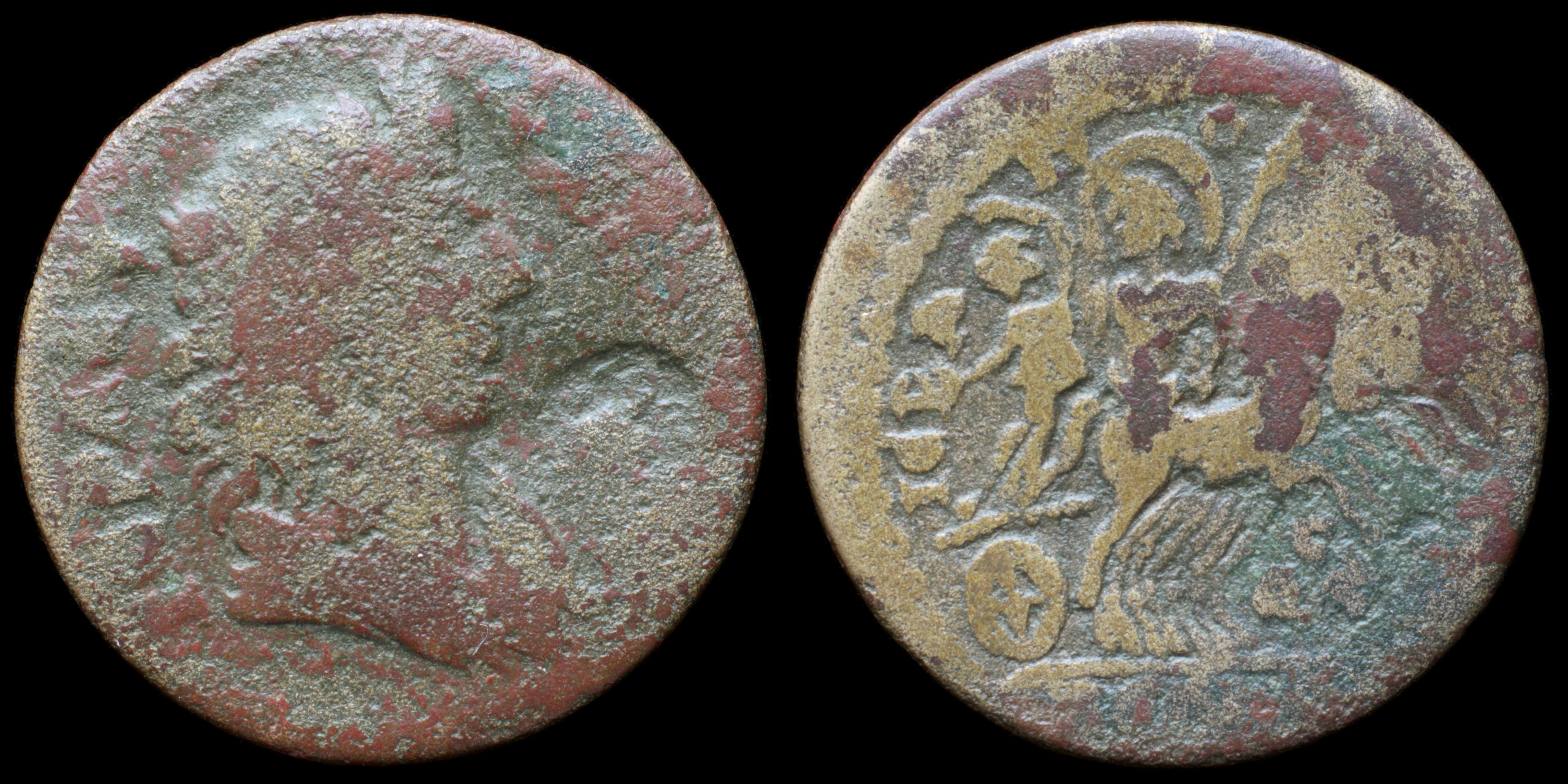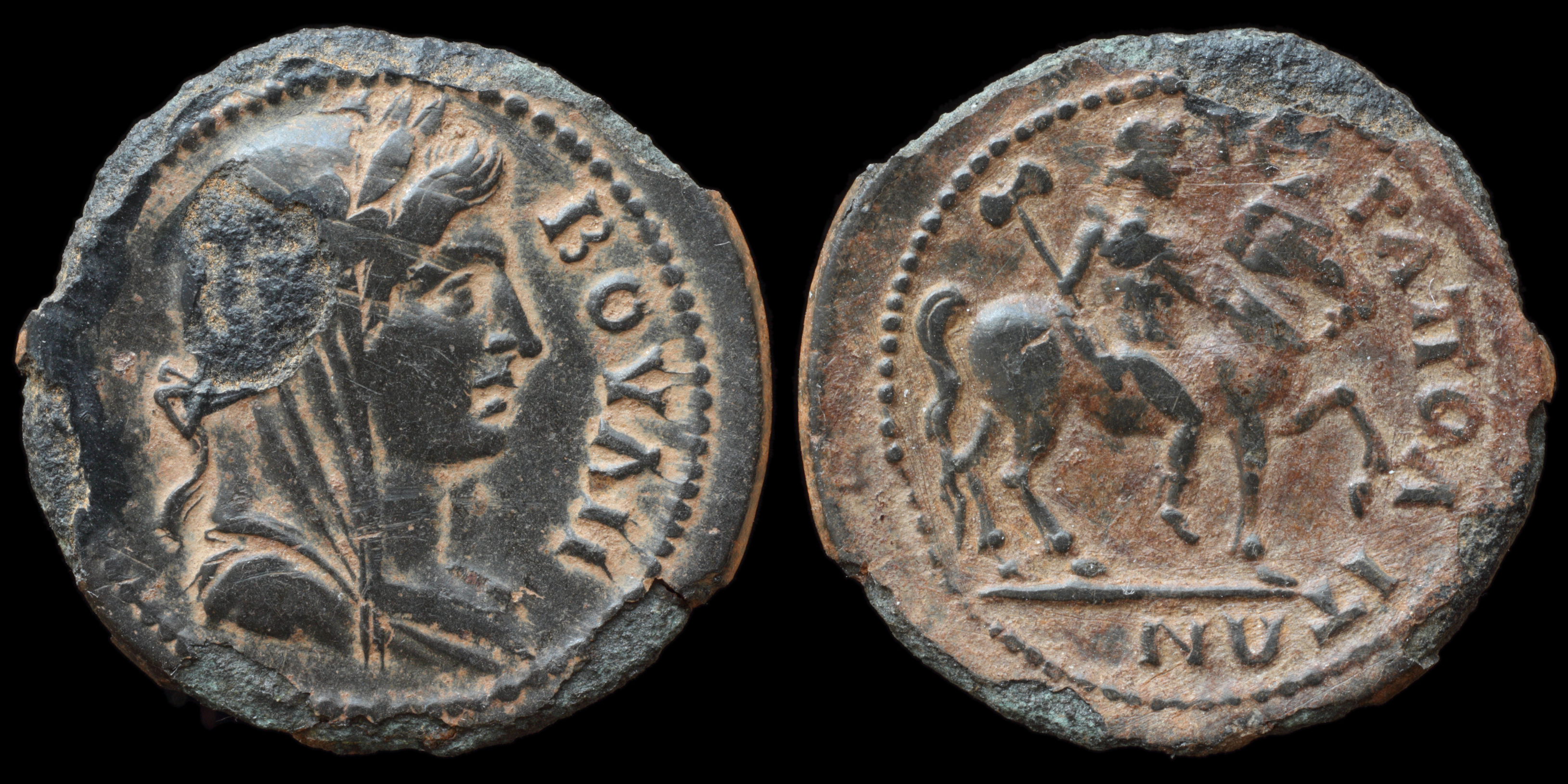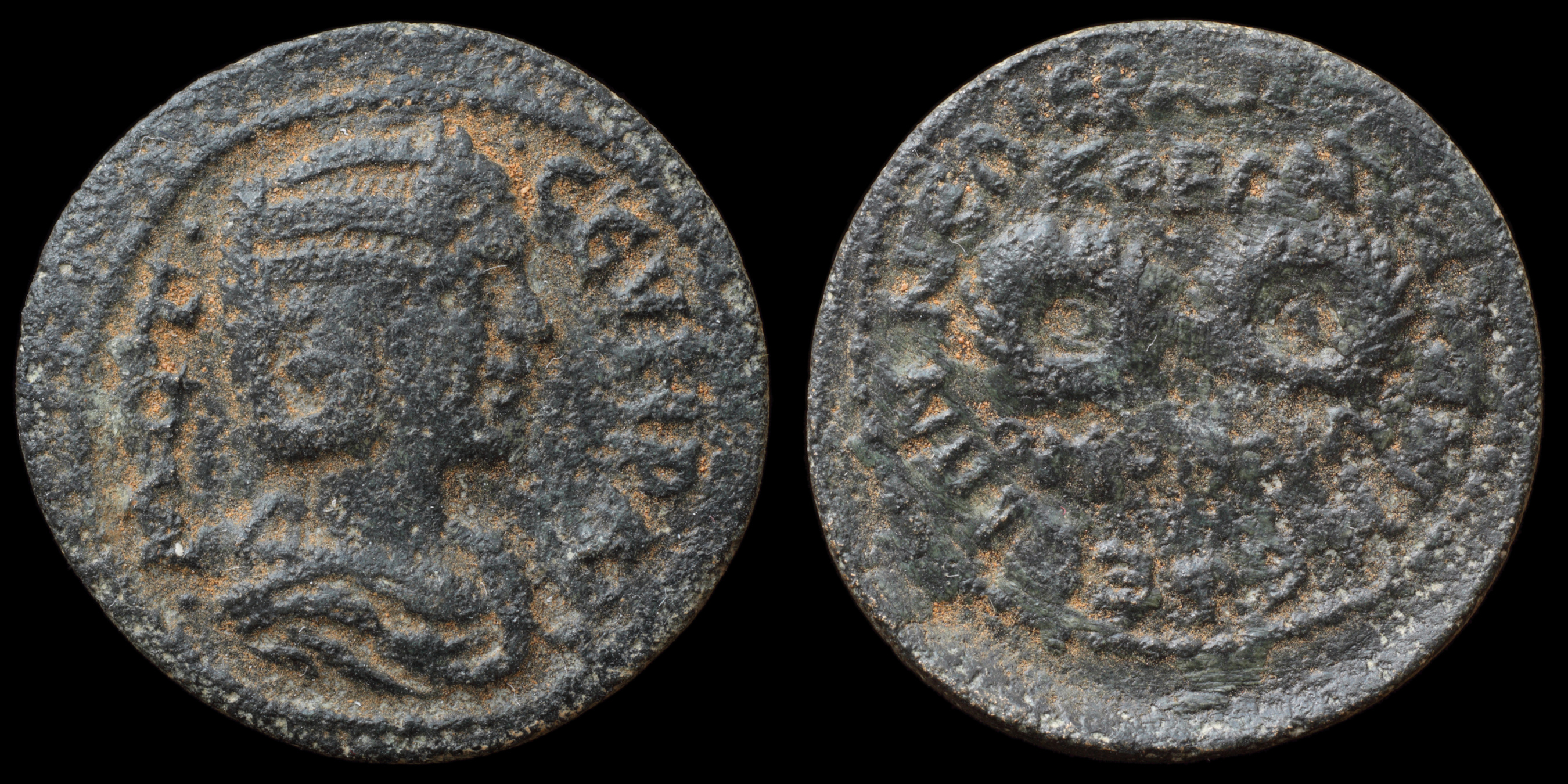Hierapolis ("Holy City" in Ancient Greek) was an city located on hot springs in Phrygia in southwestern Anatolia.
There is not much known about the origin of the city. The Phrygians built a temple, probably in the first half of the 7th century BC. The temple was used by the nearby town of Laodicea and would later form the centre of Hierapolis. Hierapolis became a healing centre where doctors used the thermal springs as a treatment for their patients.
The city began minting bronze coins in the 2nd century BC. These coins give the name Hieropolis. It remains unclear whether this name referred to the original temple (ἱερόν, hieron) or honoured Hiera, the wife of Telephus, son of Heracles and the Mysian princess Auge, the supposed founder of Pergamon's Attalid dynasty. This name eventually changed into Hierapolis ("holy city"), according to the Byzantine geographer Stephanus on account of its large number of temples.
In 133 BC Hierapolis became part of the Roman province of Asia. In AD 17, during the rule of the emperor Tiberius, a major earthquake destroyed the city. In the year 60, during the rule of Nero, an even more severe earthquake left the city completely in ruins. Afterwards, the city was rebuilt in the Roman style with imperial financial support. It was during this period that the city attained its present form. The theatre was built in 129 for a visit by the emperor Hadrian. When Caracalla visited the town in 215, he bestowed the much-coveted title of neokoros upon it, according the city certain privileges and the right of sanctuary. This was the golden age of Hierapolis. Thousands of people came to benefit from the medicinal properties of the hot springs. New building projects were started: two Roman baths, a gymnasium, several temples, a main street with a colonnade, and a fountain at the hot spring. Hierapolis became one of the most prominent cities in the Roman Empire in the fields of the arts, philosophy, and trade. The town grew to 100,000 inhabitants and became wealthy.
During the Byzantine period, the city continued to flourish and also remained an important centre for Christianity. In the early 7th century, the town was devastated first by Persian armies and then by another destructive earthquake, from which it took a long time to recover.
There is not much known about the origin of the city. The Phrygians built a temple, probably in the first half of the 7th century BC. The temple was used by the nearby town of Laodicea and would later form the centre of Hierapolis. Hierapolis became a healing centre where doctors used the thermal springs as a treatment for their patients.
The city began minting bronze coins in the 2nd century BC. These coins give the name Hieropolis. It remains unclear whether this name referred to the original temple (ἱερόν, hieron) or honoured Hiera, the wife of Telephus, son of Heracles and the Mysian princess Auge, the supposed founder of Pergamon's Attalid dynasty. This name eventually changed into Hierapolis ("holy city"), according to the Byzantine geographer Stephanus on account of its large number of temples.
In 133 BC Hierapolis became part of the Roman province of Asia. In AD 17, during the rule of the emperor Tiberius, a major earthquake destroyed the city. In the year 60, during the rule of Nero, an even more severe earthquake left the city completely in ruins. Afterwards, the city was rebuilt in the Roman style with imperial financial support. It was during this period that the city attained its present form. The theatre was built in 129 for a visit by the emperor Hadrian. When Caracalla visited the town in 215, he bestowed the much-coveted title of neokoros upon it, according the city certain privileges and the right of sanctuary. This was the golden age of Hierapolis. Thousands of people came to benefit from the medicinal properties of the hot springs. New building projects were started: two Roman baths, a gymnasium, several temples, a main street with a colonnade, and a fountain at the hot spring. Hierapolis became one of the most prominent cities in the Roman Empire in the fields of the arts, philosophy, and trade. The town grew to 100,000 inhabitants and became wealthy.
During the Byzantine period, the city continued to flourish and also remained an important centre for Christianity. In the early 7th century, the town was devastated first by Persian armies and then by another destructive earthquake, from which it took a long time to recover.
Modern location: ruins near Pamukale, Turkey
(1)
Hierapolis

An
AE
unit
struck 211-249 AD
in
Hierapolis (Phrygia)
Obverse: draped bust of Roman Senate right; countermark; IEPA CV_NKΛHTOC
Reverse: Hades abduces Persephone in quadriga right; IEPA_Π_O_Λ_ITΩN / NEΩKO / PON
Diameter:
24 mm
Die Orientation: -
Weight: 6.6 g
Die Orientation: -
Weight: 6.6 g
No notes for this coin
BMC 86-7; SNG Cop. - , SNG v.Aul. 3633. ex MZ 130, 2006, 265; Howgego 278 (for c/m).

An
AE
unit
struck c. 180-218 AD
in
Hierapolis (Phrygia)
Obverse: veiled, laureate and draped bust of Boule right; ΒΟVΛΗ
Reverse: Apollo on horse right holding labrys and reins; IE_PAΠOΛITΩN
Diameter:
24.5 mm
Die Orientation: -
Weight: 6.2 g
Die Orientation: -
Weight: 6.2 g
No notes for this coin
RPC IV.2, 9791 (temporary); Weber, NC 1913, 28, no. 5$, BMC 77-8$, Cop 432$
(3)
Otacilia Severa

An
AE
unit
struck 244-249 AD
in
Hierapolis (Phrygia)
Obverse: draped bust right wearing stephane; ·M·ΩT·_·CEVHPA·
Reverse: two wreaths; IEPAΠOΛEITΩN K EΦECIΩN NEΩ / KOPΩN // OMONOIA
Diameter:
24 mm
Die Orientation: -
Weight: 6.2 g
Die Orientation: -
Weight: 6.2 g
No notes for this coin
Franke & Nollé 694; BMC 172. var (no letters in wreaths)
